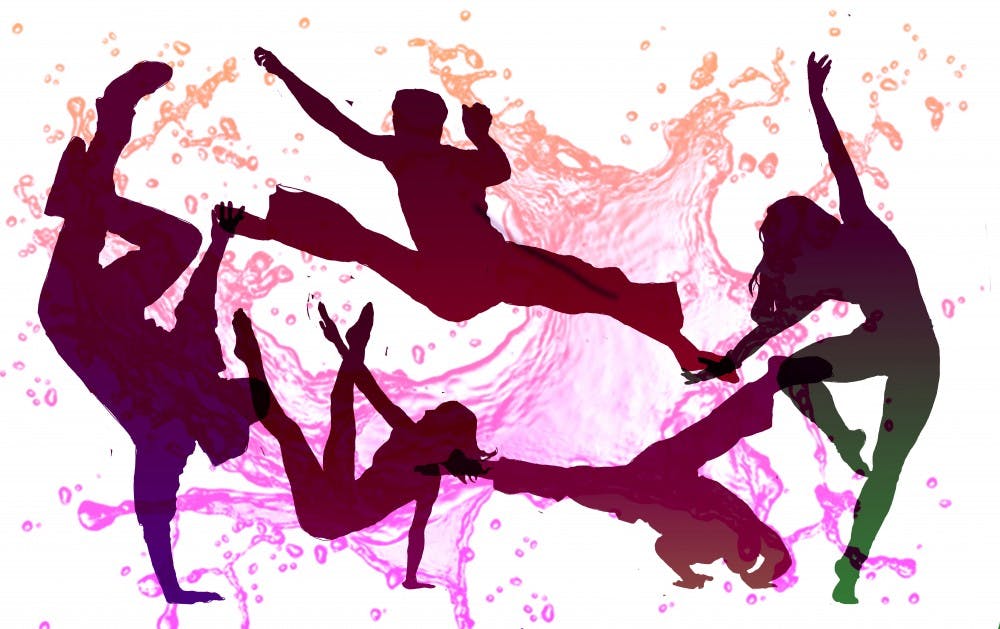Student filmmakers will have the opportunity to show their work to a national audience through the 5th annual Dance Shorts: College Film Festival on Feb. 23, hosted by ASU at Sun Studios of Arizona, a local media production facility.
The festival shows short narrative, experimental or abstract films about dance or featuring dancers.
The founder and artistic director of the festival, Sharon McCaman, said her mission when creating the festival was to provide a national forum for students with interests in dance or film to showcase their work beyond their own communities.
She said that even for those not necessarily involved in film and dance, the festival shows stories that are relatable and engaging.
“Just as artwork or architecture or the complexities in science can appeal to people, I think when you’re looking at abstract work you can find connection,” McCaman said.
This year’s festival will present 18 films selected from 11 different universities all over the country. Four of these films were done by students attending the ASU School of Film, Dance and Theatre.
McCaman is finishing her Master of Fine Arts in dance, interdisciplinary digital media and performance. She founded the festival in 2013, while she was obtaining her bachelor's degree in dance at the University of South Florida.
McCaman said she has been seeing a progression in the films at the festival since bringing it to ASU three years ago.
"The level and the quality of the filmmaking is ... getting better, because the tools and resources are becoming more abundant because people are embracing the genre,” McCaman said.
McCaman said the festival bridges the gap between film and dance by exploring film's capacity to capture stage productions. She said that film can become an extension of the choreography and contribute to the story of a dance.
“There’s already so many possibilities with movement," she said. "We have so much freedom in a way to express ourselves with our bodies, that it just becomes another way of doing that."
Nicole Curry, who is the director of the festival and is pursing her MFA in dance in the ASU School of Film, Dance and Theatre, said the best part of the festival is the low cost for students and the opportunity that it gives them for feedback from professors and professionals.
Curry said that although there are many film festivals, not many focus on dance, which makes this a great opportunity for students.
“To have this for students specifically, it allows everyone to have a chance,” Curry said.
According to the festival requirements and ASU's description of the event, students can submit films that are narrative, experimental or abstract while incorporating "any combination of music, lights, costumes and location."
The submission criteria requires that no personal identifiers or the educational institution they attend be included in the film, prioritizing anonymity in the judging process.
“The adjudicators don’t even know who each other are, and it’s all done remotely online,” McCaman said.
Graduate student Lawrence Fung’s film “Parallax” will be showcased in the festival.
Fung, who is pursuing his MFA in fance, said his film depicts “an alternative or parallel universe where there might be another identity that you have in a different universe that exists — and you guys might share similar tastes, passions or whatnot, but you guys just happen to exist in different worlds.”
Fung said that, coming from a competitive urban dance background, he has enjoyed working on dance films because they allow him to capture movement in an aesthetically pleasing way while making an emotional connection with the audience.
Fung said that one underlying theme in his film is that dancing in different environments, even everyday places, can allow dancers to step out of their comfort zone and move in an authentic, rather than performative, way.
“If you just feel like dancing, if you want to dance, then you should be able to dance without restriction because you’re just feeling the moment and you’re having fun, and it shouldn’t matter where or when or why – you should just be able to express yourself whenever you want,” Fung said. “You have that freedom, but a lot of people kind of forget about it because they restrict themselves mentally.”
McCaman said there is a lot of potential for growth within the festival, and that she hopes to add workshops leading up to it and create more of an experience for the students who participate.
“Regardless of what you’re into, there’s something there for you,” McCaman said. “Plus, if you’re a student, I think it’s really excellent to support other students.”
Reach the reporter at chofmann@asu.edu and follow @chofmann528 on Twitter.
Like The State Press on Facebook and follow @statepress on Twitter.




